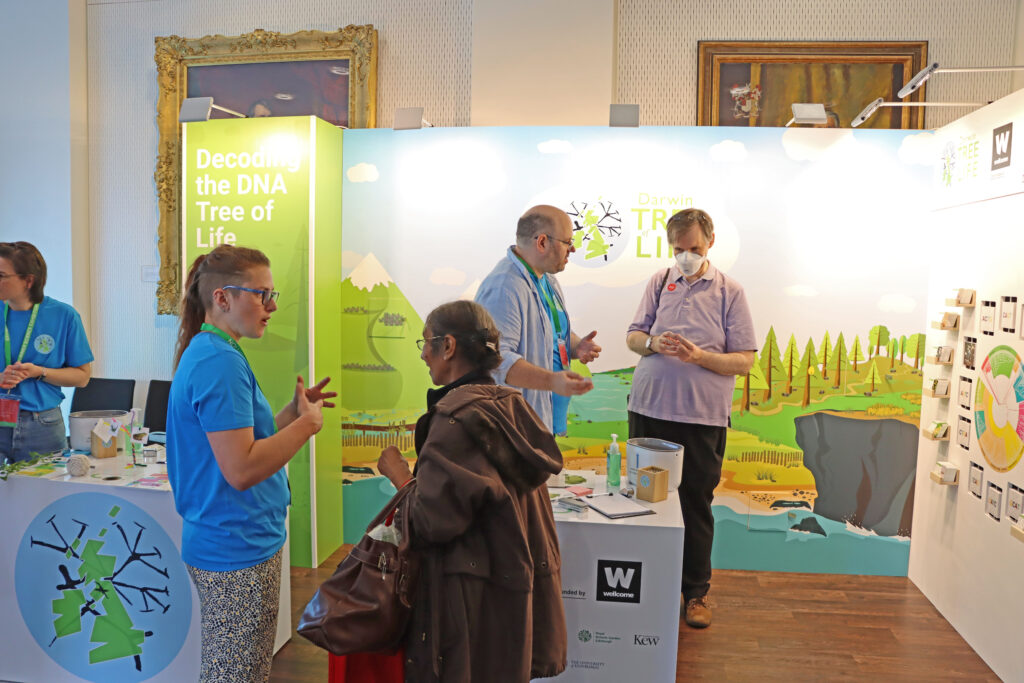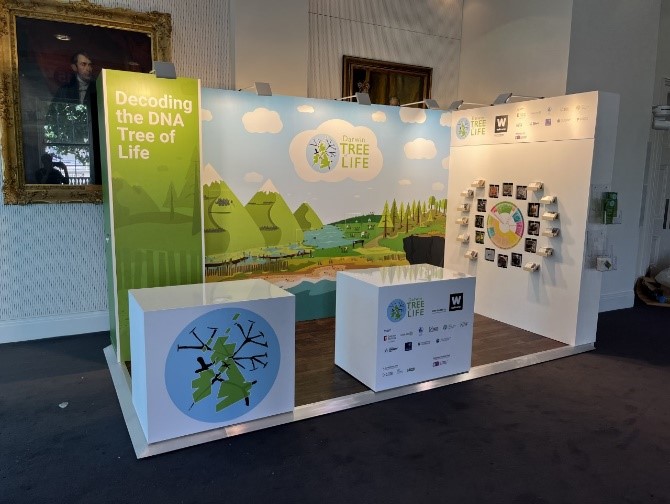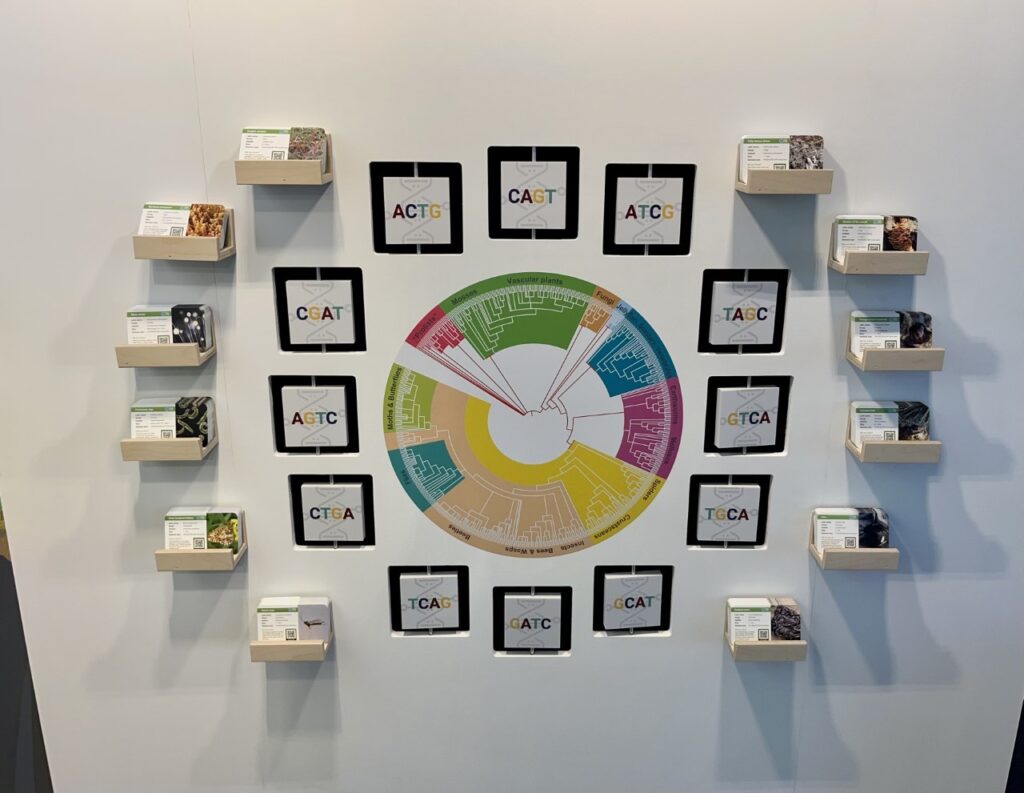Written by Kes Scott-Somme
The Royal Society Summer Science Exhibition is arguably the biggest interactive science event in the UK. Open for free to the public, it lets cutting edge science projects communicate directly with interested individuals. MBA staff Joanna Harley, Patrick Adkins and Kes Scott-Somme went along to represent the project they work on; the Darwin Tree of Life (DToL).

The Darwin Tree of Life is a collaboration of eleven different organisations, and collaboration was very much a part of the DToL stall at the Royal Society Summer Exhibition. Representatives from the majority of organisations helped run the stall over 5 days. Because the project began in the months before the Covid-19 outbreak, many of the scientists were yet to meet in person. This was a really good chance to get to know each other, as well as being a great opportunity to communicate science in person.
The Darwin Tree of Life stand was coordinated and developed by Sam Rowe of the Earlham Institute and Jack Monaghan from the Wellcome Sanger Institute. The amazing graphic design work was done by Sasha Stanbridge from the Earlham Insitute. The team worked with AMC Exhibitions who did the build, printing and construction. It included a fun game, where visitors could join the genome hunt by picking their own environment to collect creatures from, and decoding the DNA to work out what they had caught. This featured real species that have already had their genomes sequenced by the DToL team, the data of which is freely available on the DToL website.
DToL scientists also brought their own props to the stage, including real voucher specimens from the collections and even real science equipment. Working together across organisations meant that the scientists could support each other in explaining the many different components of the project. With so many different specialists, the public always had someone to talk to with a different story to tell, and at times would move around the stall talking to the different scientists about their personal connection to the work.

Over the five days an estimated 5,700 public came through the doors, alongside 33 school groups, and the 701 students and teachers involved in the Let’s Talk Science Careers – not bad for an event during a UK heatwave!
Alongside the DToL project, many other cutting edge science projects were on display, finding fun and unique ways to talk about complicated scientific work. For most of the DToL stall though, the young researcher’s room was the favourite to visit, where young pupils showed off their wonderful science projects and talked earnestly and engagingly about their results. Many young researchers and young people visited the DToL stand during the exhibition, and a few thousand flyers, postcards and species cards were handed out.


For a project with such long-term goals, engaging the next wave of scientists with the data is absolutely vital. The Darwin Tree of Life will is paving the way for a new way to do science, and will create more data than we currently have researchers to analyse. It provides the opportunity for new careers to be forged, and to connect directly with some of those potential future researchers was a fantastic opportunity.
If you want to know more detail about what the Darwin Tree of Life does, you can read previous articles here, and follow the project on Twitter.